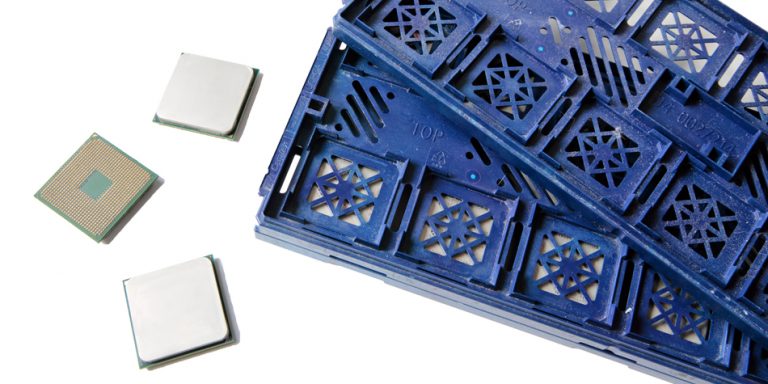The past two weeks have been miserable for Advanced Micro Devices, Inc. (NASDAQ:AMD) shareholders. AMD stock has fallen nearly 14% since its analyst day meeting on May 16, when the company didn’t confirm rumors that it and Intel Corporation (NASDAQ:INTC) weren’t teaming up.

Intel’s GPU contract with Nvidia Corporation (NASDAQ:NVDA) expired in March, and the company was supposed to be shopping around.
Fanning the bearish flames since then was a downgrade of AMD stock from Loop Capital analyst Betsy Van Hees. She lowered her stance on the company from a “Buy” to a “Hold” on concerns that Advanced Micro Devices’ business model isn’t going to work well enough in the long run. Van Hees doubts AMD and Intel will ever come to an accord, simply because Intel doesn’t need to make a deal.
Several other analysts expressed similar concerns shortly after the analyst day event.
It begs the question: Was the market wrong to push AMD stock up more than 400% between March 2016 and March 2017 on hopes that a true turnaround was underway? Or does Advanced Micro Devices have enough in its pipeline to justify the huge rally?
The New and Improved AMD
No suspense or teasing is required here — Advanced Micro Devices is the real deal, and has positioned itself for massive growth that simply wasn’t possible as recently as a year ago.
Just don’t conflate the company with the stock.
As yours truly pointed out in April, there was and still is a disconnect between AMD stock and AMD’s plausible near-term future. In other words, the stock’s price got too far ahead of its near-term prospects. It happens.
Counted among the bullish factors is the development of a central processing unit (or CPU) called the Ryzen. It’s built to compete with Intel’s Core iX series at about half the price, and it achieves its goal.
While the initial reviews of Ryzen processors were a bit wobbly, the reason for their subpar performance underscores the underlying problem: Video game designers didn’t develop many of their recent publications to be played on the new CPU architecture. Now with AMD’s developer tools in hand and good reason to create patches that utilize the Ryzen’s eight cores and 16 threads, gaming on the processor will improve as patches and updates are released.
Another weapon in Advanced Micro Devices’ arsenal is its yet-to-be-released Vega graphics processing unit, which takes aim at Nvidia’s growth within the GPU space. Vega’s architecture allows for the offloading of the graphical processing from the video card to the motherboard’s memory, which is generally more powerful than a video card itself.
Yet, AMD’s GPUs are powerful in their own right. They’re so fast that when several of them are used in parallel, they’re fast enough and accurate enough to serve as the computing power needed in artificial intelligence applications. Its Radeon line of graphics processing units have already been tweaked for this purpose, effectively throwing its hat in a ring largely controlled by Nvidia.
There’s still more on the company’s R&D plate to unveil, then launch.
It’s interesting simply because it’s all new. While Advanced Micro Devices has remained in business, it has been far more focused on development than production for the past several years. The fruit of that labor is just now starting to ripen, and these fruits are considerably more competitive than its previous fruit has been. This isn’t the AMD of three years ago, or even one year ago.
Bottom Line for AMD Stock
Still, Advanced Micro shares look and feel overextended. That’s because they are.
Investors were bluntly reminded of this a couple of weeks ago when the company offered lackluster guidance in conjunction with its analyst day event. AMD said it’s expecting to earn 75 cents per share in 2020, as a wide array of these new products reach their peak revenue potential. Analysts were expecting more, and faster, with the 2018 profit consensus standing at more than $1 per share.
In that light, one can’t help but at least partially blame the stock’s unmerited run on overly optimistic analysts who may not have fully understood exactly how will the company’s new lineup would carve out new market share. Their backpedaling in the meantime has worked against AMD stock.
There’s also the distinct possibility that AMD is low-balling its estimates to set up some impressive earnings beats.
Whatever the case, the solution to the dilemma is a pullback in the stock’s price, which seems to be unfurling.

Advanced Micro Devices shares have fallen 25% since March’s highs, and are still acting as if they’re willing to slide lower. The only thing holding back a bigger selloff thus far is support at the 200-day moving average line. But even then, there’s no assurance that long-term line will serve as a floor when the time comes.
That line in the sand is presently around $10.20. Should that support break, looking for the selling floodgates to open.
On the flipside, once the floodgates have opened and all the would-be sellers have spilled out — a move to the $6 area is a frightening but realistic possibility — don’t be afraid to be a buyer. AMD stock has more going for it now than it has in a long while, and all of it is the real deal.
Traders simply got a little too overzealous about the future. That’s nothing a decent-sized corrective move can’t fix.
As of this writing, James Brumley did not hold a position in any of the aforementioned securities.
